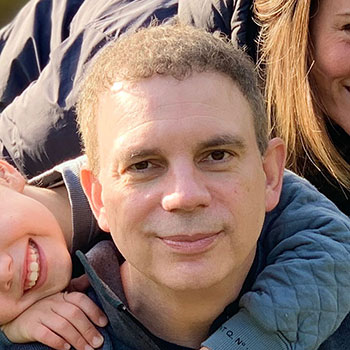What’s Your Process to Remove Anxiety?
Step #1
The first step in helping people deal with the symptoms of anxiety is to teach them a few very simple techniques to help them for when they feel really anxious. We always ask people when they first visit The Compassion Center ‘how anxious do you feel at this moment on a scale of 1 to 10 with 10 meaning your anxiety is about as bad as it gets. Most people say their number is anywhere between 7-10+. We teach them some breathing and imagery techniques that bring most people to 2-5 within 5-10 minutes. By the time they leave the class, they report that their anxiety is completely gone, they feel extremely relaxed, feel very light, and feel very happy.
Step #2
We talk about your life. Once a person has started to relax, they are open to discussing the challenges that may be contributing to their anxiety. In almost all instances, they are facing fears regarding their future. For some, their fear is related to money and possibly their career. For some, they are facing debilitating health issues. In many instances, something has happened during the person’s childhood or young adulthood that has paved the way for their anxieties to manifest in full bloom when the person has reached different stages of their adulthood. By understanding where the person’s anxiety stems from, I can recommend meditations that will help resolve these issues.
Step #3
The Meditation method that we teach is based upon traditional Buddhist Meditation. It is a completely non-religious, easy to learn, easy to practice technique that truly anyone can learn. It involves relaxing the body, bringing the mind into a still state, using the breath, and bringing to mind the changes that we wish to make in our lives. It is a very effective treatment methodology that is recognized and recommended by a large percentage of psychotherapists and psychologists.
How Long Does It Take to Remove the Symptoms of Anxiety?
You will learn techniques that will immediately bring relief to you when you are having severe anxiety including panic attacks. Within the first 2 weeks of practicing Meditation, you will notice that the symptoms have started to subside. You will either start to notice that you don’t feel so anxious on a regular basis or will simply find that your mind doesn’t go to your anxious symptoms as often as it used to because the symptoms are no longer there on a regular basis. And with regular practice, within 2 months (3 months maximum), your anxiety will be a thing of the past!
How Does Meditation Work?
One of the main reasons that people have anxiety is that they have stopped living in the moment and are leaving in the land of “what if”. We have trained our brains very well to constantly think about things like ‘what if I lose my job’, ‘what if I can’t pay my rent/mortgage’, ‘what if my husband/wife no longer loves me’, ‘what if the doctor tells me that I feel this way because I have a horrible illness’. These “what if” thoughts are in the forefront of our brains and we have stopped looking, listening, hearing, tasting and experiencing all the things around us. These thoughts are so consuming, they make us feel anxious.
Meditation brings you back into the here and now. It starts to slowly move the negative thoughts away from the forefront of our thoughts and moves these towards the back of our thoughts. Our brain starts to reconnect with very pleasant thoughts. We allow our brains to return to their original state…a state of calmness…a state of happiness..a state of living in the moment. It takes time, but once we start to reconnect with this very calm, quiet, relaxed state, the brain says ‘I remember that, I much prefer that than thinking these negative thoughts all the time’. We rewire the brain to start connecting with positive thoughts.
Is Yoga and Meditation The Same Thing?
The answer is “no”. Some people are confused about what we do in a Meditation class. We don’t do Yoga poses. You sit in a standard chair with a back rest. You don’t need to wear workout gear. Just dress comfortably. The majority of the work is based upon breathing techniques, visualizations and simply following my guidance. Yoga classes are primarily dedicated to “asanas” or postures/positions that you place your body into.
What Types of People Meditate?
Meditation is practiced by all types of people. We see a lot of teachers, nurses, policemen, firemen, salesmen, attorneys, people in finance, more. We have had therapists come to our classes. Yes, many therapists not only practice Meditation, they are big advocates of Meditation and recommend Meditation to their patients. Meditation is also practiced by many of the wealthiest and most successful businessmen in the world.
Are Your Meditation Classes Religious?
The Meditation techniques we teach are completely non-religious. In fact, you will be able to use these techniques to help you strengthen your beliefs and have deeper personal experiences when you go to your place of worship.
Are There Different Types of Meditation?
The average person says that they “meditate” all the time. When I ask them how they do this, they say that they either sit somewhere and just think ‘quiet thoughts’ or they play some type of music/audio and simply listen to it. People are very surprised when I tell them that what they’re doing isn’t Meditation. It is “relaxation” and possibly a way to quiet the mind a bit, but it’s not Meditation. Meditation’s primary goal is not to ‘shut down your brain and become relaxed’. Becoming relaxed is one of the elements of connecting with the meditative state, but relaxation in itself is not Meditation.
Isn’t Meditation Sitting Cross Legged on a Cushion?
You will NOT be sitting on the floor cross-legged with your hands turned up and fingers pinched together (unless you want to). The majority of people who come to our classes sit in a traditional chair that has a back for support. And for those who have practiced Yoga and/or Meditation, if you wish, you may sit on the floor on one of our handmade Meditation cushions.
What’s The Difference Between Sitting Quietly and Meditating?
Meditation’s primary goal is to set a “Motivation”. A Motivation is the creation of a thought. The thought is a change that you wish to bring into your life. Possibly you wish to remove something from your life (such as anxiety). By getting into the meditative state, we are making a commitment to achieving that Motivation. When we sit quietly, we are attempting to bring quiet to the body and mind. This is necessary for Meditation, but it is the Motivation and doing specific healing Meditations that differentiates Meditation from simply quieting the mind.
Does Meditation Effectively Remove Anxiety and Its Symptoms?
I have personally taught Meditation to hundreds of people suffering from extreme anxiety and can tell you that in each and every instance, the person who learned how to meditate was able to dramatically reduce their anxiety and in most instances, completely remove all of the symptoms of anxiety.
Where Do You Start?
Which solution is best for you? Part of the decision must be based upon your commitment and dedication to resolve the underlying issues of your anxiety. If you are disciplined and willing to commit to a daily Meditation practice, Solution #1 will work. However, if your anxiety is out of control and you are looking to eradicate this as quickly as possible, Solution #2 is your best choice.
Choose The Solution Below That Is Best for You




